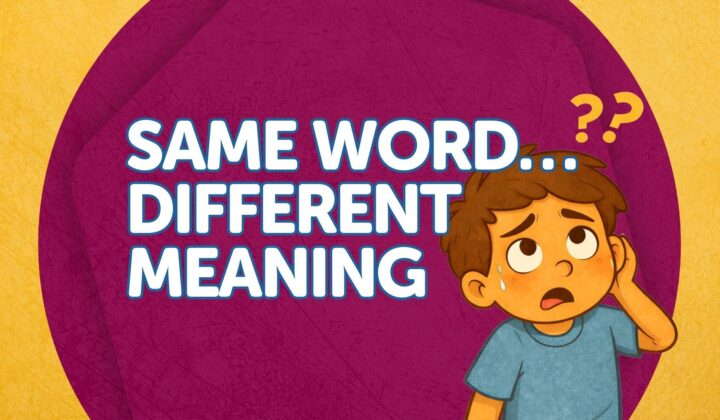Learn more about the journey that led to us equipping kids to carefully evaluate every idea they encounter.
Meet members of our team who have contributed to curriculum development.
Hear from real users of the Foundation Curriculum.
Learn what we believe about God, Jesus, Scripture, and more.
How Christian Parents and Teachers Can Talk To Children About Gender Identity
If you told me ten years ago that I would one day craft entire lessons for children on how to tell the difference between boy image-bearers and girl-image-bearers, I would have laughed out loud. Ten years ago, discerning the difference between boys and girls was the least of our worries when it came to raising children. But that is not the case any longer.
While the terms “sex” and “gender” used to be regarded by the general public as synonymous, things are no longer that simple. Today, these terms are used in nuanced ways. And, if we are not careful in our understanding and use of these culturally nuanced terms, we risk talking past both our children and our neighbors.
So, what are we to do? How can we remain biblically faithful, grounded in reality, and missionally minded as we prepare our children to live in this strange new world?
These concepts can help equip us as parents and teachers to think clearly about this topic for ourselves and then translate them into conversations with our kids.
Contents:
Explaining Gender Identity to Kids from a Biblical Worldview
Free webinar with Dr. Christopher Yuan and Elizabeth Uranowicz.
How Do You Explain Gender To A Child?
The confusion about gender identity is rooted in language and the definitions we use. Quite often, we confuse or conflate important terms. This error makes having a biblical, reality-based view of gender almost impossible. To have a correct understanding of gender and to then help our children understand it as well, we must ensure that we do not confuse or conflate the use of the terms sex, gender, norms, and calling.1
Biblical View of Biological Sex
Defining gender first requires a clear definition of biological sex. Sex is an objective binary classification based on reproductive functions: male or female.
Many people in our culture claim that sex is “assigned” at birth. Sex, however, is not assigned, it is observed. Whether a baby is male or female is an objective claim that is rooted in the child’s biology.
To help our children understand the objective nature of biological sex, we need to help them understand the categorical difference between objective truths and subjective emotions. The first unit in every Foundation curriculum provides practical activities to highlight the difference between an objective truth claim (that is either true or false) and a subjective preference claim that is controlled by someone’s “inner” world.
Once our children understand the difference between objective truths and subjective emotions, we can tie this concept into the category of biological sex. We can directly ask them,
“When a doctor delivers a baby, looks at the baby’s body and says, ‘It’s a boy,’ or ‘It’s a girl,’ is that doctor making an objective truth claim or a subjective preference claim?”
Biblical View of Gender
Gender is a more recent secular classification. In the past, the terms sex and gender have been used interchangeably. However, that is no longer the case. If we are to both help our children think clearly and reach out in love to our neighbors, we must have an accurate understanding of how our secular culture uses the term gender.
Gender is currently defined as a subjective self-perception - how I view myself. This concept of gender views gender as a completely subjective and fluid reality. Yet, as the reality that supersedes all other realities. How do I feel today? It may be different than how I felt about myself yesterday. These feelings may align with the objective reality of my biology or they may be completely subjective. Yet, if these subjective feelings do not align with objective reality, it is reality, not my inner psychological perception, that must change.
Do you see how this concept of gender is vastly different from the way many of us Christian parents and educators use the term? We must understand how a term is being used if we want to effectively communicate truth with others.
Unit 2 in Foundation’s Careful Thinking Curriculum covers the law of identity and how it relates to vocabulary. The fact is that the definitions of terms, such as gender, shift. So, we might be using the same word but talking about something completely different. We are wise to directly explain to our kids how culture defines the word gender and ask them if this use of the term describes an objective truth or a subjective feeling.
Biblical View of Cultural Norms
Another important term for us and our children to understand is the concept of norms. When we refer to “norms”we mean how men and women express themselves and how these behaviors are shaped by culture and society.
Norms vary from age to age and culture to culture. For instance, if we take the quintessential rough-and-tumble picture of masculinity in the West and we import that concept into Asia, we will clearly see some differences! The ideal Western picture of masculinity is seen as anything but ideal in Asia.
We need to help our kids understand that norms are culturally bound and do not necessarily reflect God’s ideal for each sex. We must help our children see that whatever their gifts, preferences, and proclivities, they distinctly express the image of God as a male or a female. Whether they follow the pattern of typical cultural norms, or fall far outside of those norms, they are either a male image-bearer or a female image-bearer who reflects God to the watching world.
Biblical View of Calling and Roles
The final term we must help our kids understand is that of calling, or roles. This idea of calling is distinctly biblical and is rooted in the belief that Christians should look to Scripture as our authority and foundation for gender identity.
The Bible teaches that men and women are both equally valuable and distinctly different. Men are not women and women are not men. In certain social spheres, such as the home and the church, God has given men and women distinct callings, Both or which are valuable and necessary. And our biological sex is not merely a biological reality, but also a spiritual one that will last into eternity.
Equip Your Kids at Home
Foundation's Homeschool Curriculum supplements your child's homeschool experience with worldview and apologetics training.
What Age Should You Talk To Your Child About Gender Identity?
No matter the age of our children, we can help them understand these four distinct terms and then ask them key questions based on the concepts of objective truths and subjective preference. If your kids are ages four and up, then now is the time to start walking through these issues.
For Younger Children
For kids under the age of eight, we can begin playing a game where we help them discern the difference between truths and feelings. We can tell them different sentences. If the sentence represents an objective truth, we can have them jump up, spread out their arms, and shout, “Truth!” If the sentence represents a subjective feeling, we can have them smile, give themselves a hug and say, “Feeling!”
For kids eight and up, we can play the same game, only we can have them use the terms “objective truth” and “subjective feeling.” We can also ask them, when a baby is born and the doctor says, “It’s a boy,” or “It’s a girl,” is that an objective truth claim based on biology or is it a subjective claim based on the doctor’s preference?
Teenagers
Having these same conversations with older kids are going to be more challenging because we’ll have to do more reformative work by tearing down faulty ways of thinking about objective and subjective differences. However, it’s never too late to start training them to discern the difference between objective truth claims and subjective preference claims.
Conclusion
Conversations with our kids around the definitions of sex, gender, norms, and callings are crucial in a culture that is blurring the lines of gender identity.
We hope that you can see the goodness of God’s design and faithfully talk to your children about gender identity.
Start a Conversation About Gender Identity and Other Difficult Questions
Figuring out how to talk to your child about gender identity ties into a host of other cultural challenges to the biblical worldview. Take the first step to challenge every type of faulty thinking with your kids.

About Elizabeth Urbanowicz
Elizabeth Urbanowicz is a follower of Jesus who is passionate about equipping kids to understand the truth of the Christian worldview. Elizabeth holds a B.S. in Elementary Education from Gordon College, an M.S.Ed. in Education from Northern Illinois University, and an M.A. in Christian Apologetics from Biola University. Elizabeth spent the first decade of her professional career teaching elementary students at a Christian school. Elizabeth now works full time on developing comparative worldview and apologetics resources for children. Her goal is to prepare the next generation to be lifelong critical thinkers and, most importantly, lifelong disciples of Jesus.
Related Posts and insights

Boost Comprehension: State the Lesson Objective First
Help kids become independent learners by stating lesson objectives upfront and reviewing them at the end. A simple, biblical strategy for better comprehension.

Teaching Kids to Think Carefully About Words
Teach kids to think biblically about words. Learn how terms like "stealing" and "love" get twisted in culture and equip children with critical thinking.

Furry Culture and Kids: A Biblical Perspective on Identity and Play
Biblical guidance on furry culture & helping kids distinguish God-given imagination from identity confusion. Practical tools for Christian parents.
